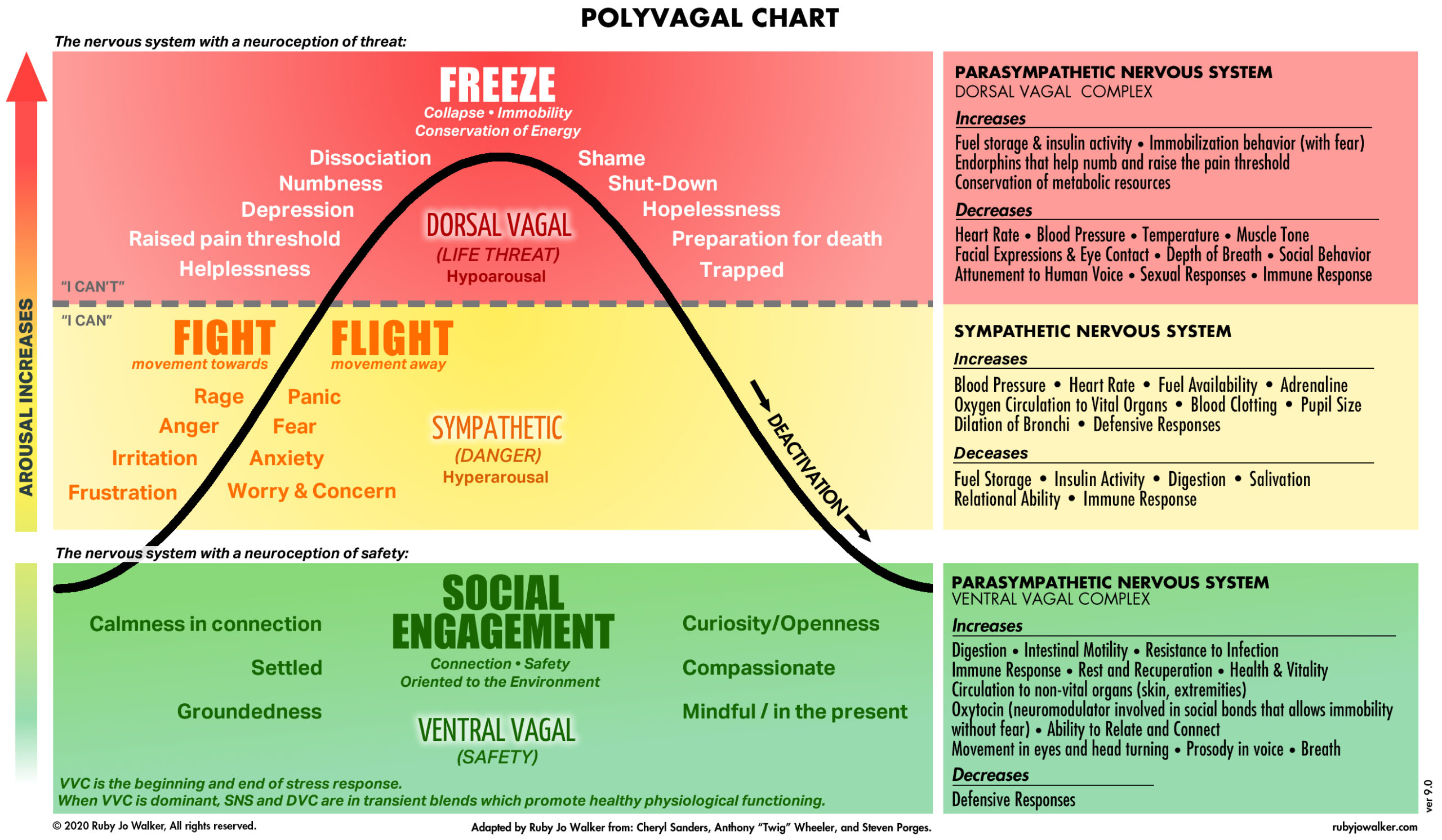Polyvagal Theory for Dummies
Feb 22, 2023
So you've heard about it. Maybe your friends have mentioned it to you. Or you have read about it on the Internet. But you still don't quite understand what "polyvagal theory" actually is.
You try to understand the theory – really, you have! – but it doesn't seem to light up the fireworks for you the way it seems to for others. Sometimes, the explanations seem a little bit convoluted, as if there is some secret handshake of understanding that feels just out of reach. Never fear!
We can explain polyvagal theory for you in an easy-to-understand nutshell, so that you can actually get it and use it – so it can make a difference in your life.

So, what the heck is "Polyvagal Theory" and how does it work?
Polyvagal theory is a way of understanding how your nervous system works, and how it affects your ability to feel safe – or not – in the world. It was created by Dr. Stephen Porges, and basically states that there are two main ways that your nervous system can respond to stress or danger. The first way is the "fight-or-flight " response – you know, the one where your heart races and you feel like you could either run away or punch someone in the face. This is the response that our ancestors used when they were faced with a predator or a threat to their safety. You know the feeling… your heart starts to pound, your palms start to sweat, and you feel like you could either run away or fight.
The second way that your nervous system can respond is the "freeze response." This is the one where you feel like you just want to curl up in a ball and hide from the world. Your heart rate slows down, you might start to feel numb, and you might even dissociate from your body – like you are watching yourself from outside of yourself. This is the response that our ancestors used when they were facing a threat that they could not fight or run away from.
The third way that your nervous system responds is actually when you are not under stress. This is when you are in your relaxed, socially engaged, able to connect to other people state of being. Maybe you are resting, relaxing, having fun, playing, or feeling safe and connected to those you love. This is the "ventral vagal" state of being – and is actually probably the most ideal state to be, if we can.
The Polyvagal Ladder
One valuable metaphor that can help understand polyvagal theory is the "polyvagal ladder" – first introduced by Deb Dana. Check out this simple infographic, from my Instagram page, that describes this metaphor.
View this post on Instagram
So, which response is better? Well, it depends on the situation. If you are faced with a predator, the fight-or-flight response is probably going to be more helpful than the freeze response. But if you are faced with a stressor that you can't do anything about – like a deadline at work – then the freeze response might actually be more helpful, because it can help you to conserve your energy and resources. Other times, it's just best to hang out in the ventral vagal state – the one where we are feeling connected and in flow.
The interesting thing about the freeze response is that it is often misunderstood. People often think that the freeze response is "bad" because it makes us feel helpless and powerless. But the truth is, the freeze response is actually a very adaptive response – it's just that our modern world doesn't always provide us with situations where the freeze response is helpful.
So, how can polyvagal theory help us in our everyday lives?
Well, understanding polyvagal theory can help us to understand why we might feel "stuck" in certain situations – like when we are facing a stressor that we can't do anything about. It can also help us to understand why we might feel "triggered" by certain things – like a sound or a smell that reminds us of a traumatic event. And understanding polyvagal theory can also help us to understand how we can use our breath and our body to feel more safe in the world.
If you are someone who is looking for an easy-to-understand explanation of polyvagal theory, I put together a simple video that goes over all of the basics. Sometimes, a picture (or a video is worth a thousand words). Check it out, and let me know what you think!
We hope that this has helped to demystify this complex theory and that you can start to use it in your everyday life!
Photo by Clint Adair on Unsplash
Infographic by Ruby Jo Walker (adapted with permission)
Sign up for our Newsletter
Keep up with our latest offerings and events. Stay connected with community.
No spam. Ever.



